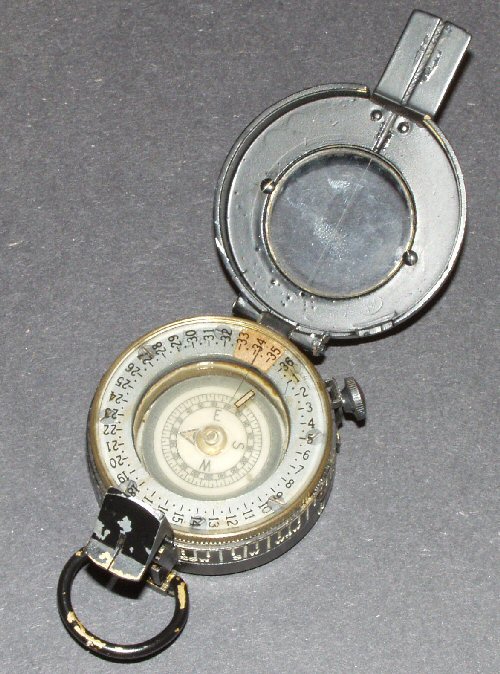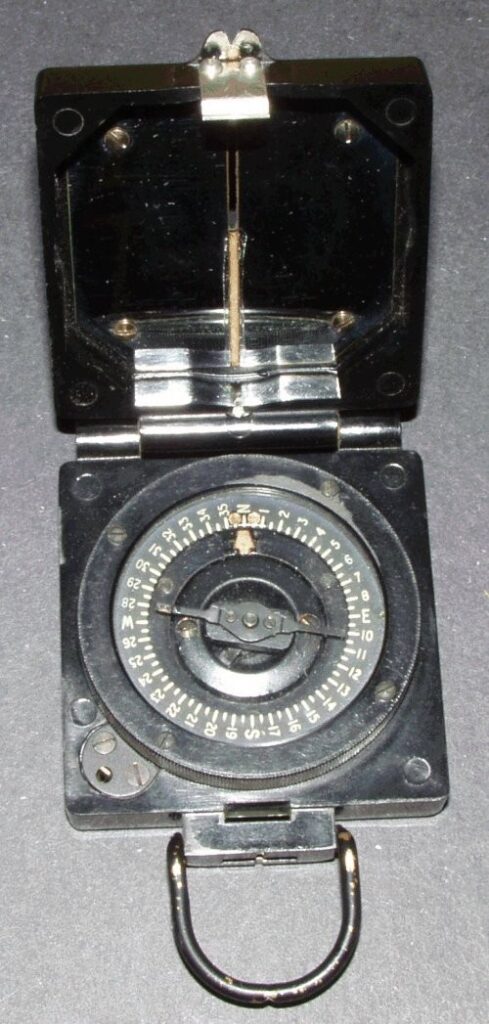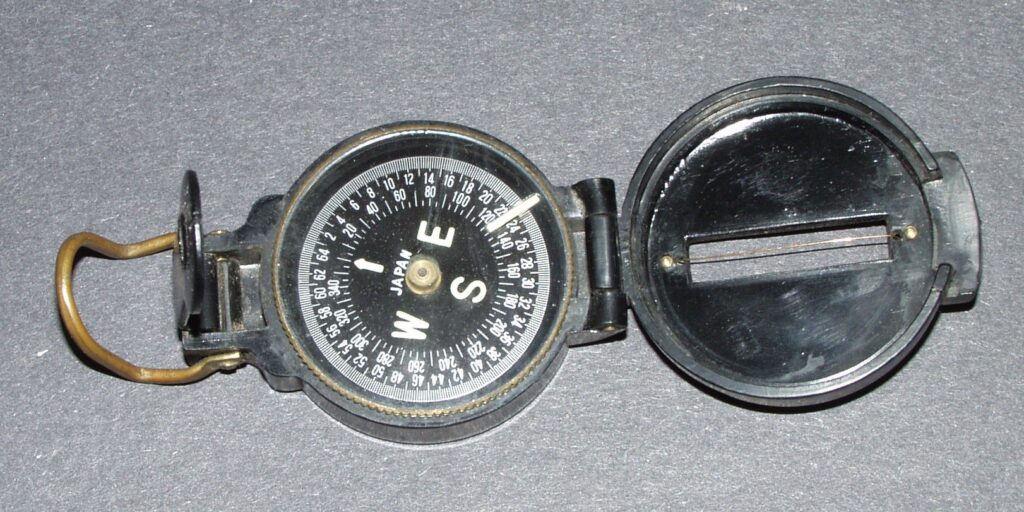WWII was an opportunity to refine compasses primarily for the miltary services. Verners Prismatic compasses had evolved significantly during WWI, but manufactures refined the design and the result was the Mk IX.

The Mk IX was a dry card compass and despite the fact that the card does not settle quickly compared to the Mk III liquid filled compass, it is preferred by some because it is much lighter.

At the same time a cheaper compass for marching was introduced, the Mk I Marching Compass.

This had a bakelite case and was a robust easily used compass.

The American forces adopted and refined the Lensatic compass which had been around since the early 20th C.
In addition there were many compass designs created for the other forces for use in planes and boats/ships.
